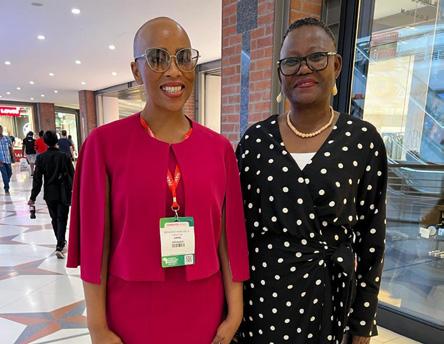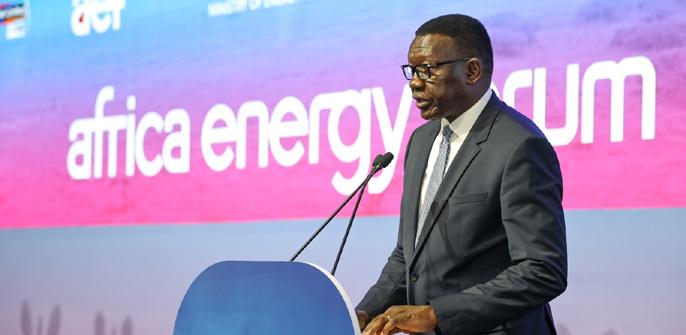
2 minute read
KEY HIGHLIGHTS FROM MINING INDABA 2023 Understanding the Demand and Supply Dynamics
from theTradeEnvoy
Mining Indaba is Africa’s premier mining event and one of the largest events, across the continent.
Hosted at the Cape Town International Conference Centre (CTICC), this year the event welcomed over 10,000 delegates from over 100 countries, including over 800 investors and dealmakers.
Advertisement
The event offered the opportunity for ministerial representatives from Africa to network and discuss issues of importance that encourage collaboration and alignment between countries.
Participants from across the continent were also able to connect with mining companies operating in their regions to unpack relevant topics of importance.
One of the prevalent messages emphasised was the importance of creating additional mineral value in-country through downstream beneficiation and the manufacture of end-products.
Three minerals marked as highly in demand at the Mining Indaba final report
The final report on the mining Indaba 2023 indicates that three minerals in Africa are in dire need of supply even as clean energy dominated discussion stage.
These include Nickel, Cobalt and Copper. South Africa is currently the largest nickel producing country in Africa. The Democratic Republic of Congo (DRC) is by far the world’s largest producer of cobalt, accounting for roughly 60 percent of global production.
It is also the largest producer of copper, and according to Statista, having produced around 1.88 million metric tons of copper in 2021.
Under the theme “Unlocking African Mining Investment: Stability, Security, and Supply, clean energy extended into larger decarbonisation strategy outlines and in particular, how hydrogen could be utilised effectively within this field.
Mineral Financing and Funding
According to the report, the financing sector in light of the mining on the continent has shifted from the tradidtional capital markets (stock exchanges) which the report says have been sidelined when raising cash for development of the “hottest minerals” at Africa’s-based batterey metals assests.
Much of the capital raised currently is being generated from strategic equity through offtakers, stream finance, loan finance connected to large trader offtakes, and selective project finance from banks.
Technology adoption in mining
While the industry still calls for technology disruption to achieve true operation enhancing effects, this can already be seen within the supply chain and emerged as discussion points with regards to space and deep sea mining technology.
InfraTech programme delivered an array of technology focused sessions that not only showcased the mining industry’s willingness to adopt new technologies, but its ongoing commitment postCOVID-19 to continue with the process catalysed by the pandemic. While the industry still calls for technology disruption to achieve true operation enhancing effects, this can already be seen within the supply chain and emerged as discussion points with regards to space and deep sea mining technology.
The programme emphasised the importance of technology adoption and partnerships amongst local African manufacturers.
Top country investors in mining
The report pulled data top ten countries which have heavily invested in mineral as an additional indicator for economic output.
They are championed by South Africa at 70 percent and is trailed by Zambia, Namibia and Botswana which tie at second position with 47 percent of investment.
DRC is positioned third in terms of investment at 43 percent, followed by Zimbabwe (33%) Ghana (33%), Mozambique is fourth with 30% followed by Kenya and Cote D’Ivoire at 23%, Uganda Tanzania and Cameroon at 20%.
Senegal, Morocco, Mali, Malawi, Guinea, Ethiopia, and Congo all tie at position seven at 17 percent rate of investment in the mining sector.
Nigeria, Africa’s largest oil producer ranks the lowest in terms of investment at just 13 percent, a position it shares with the United States.
Outside Africa, Canada is positioned as first among investor country globally according to the report at 30 percent. Peru is second at 17 percent then the U.S is last with just 13 percent.










